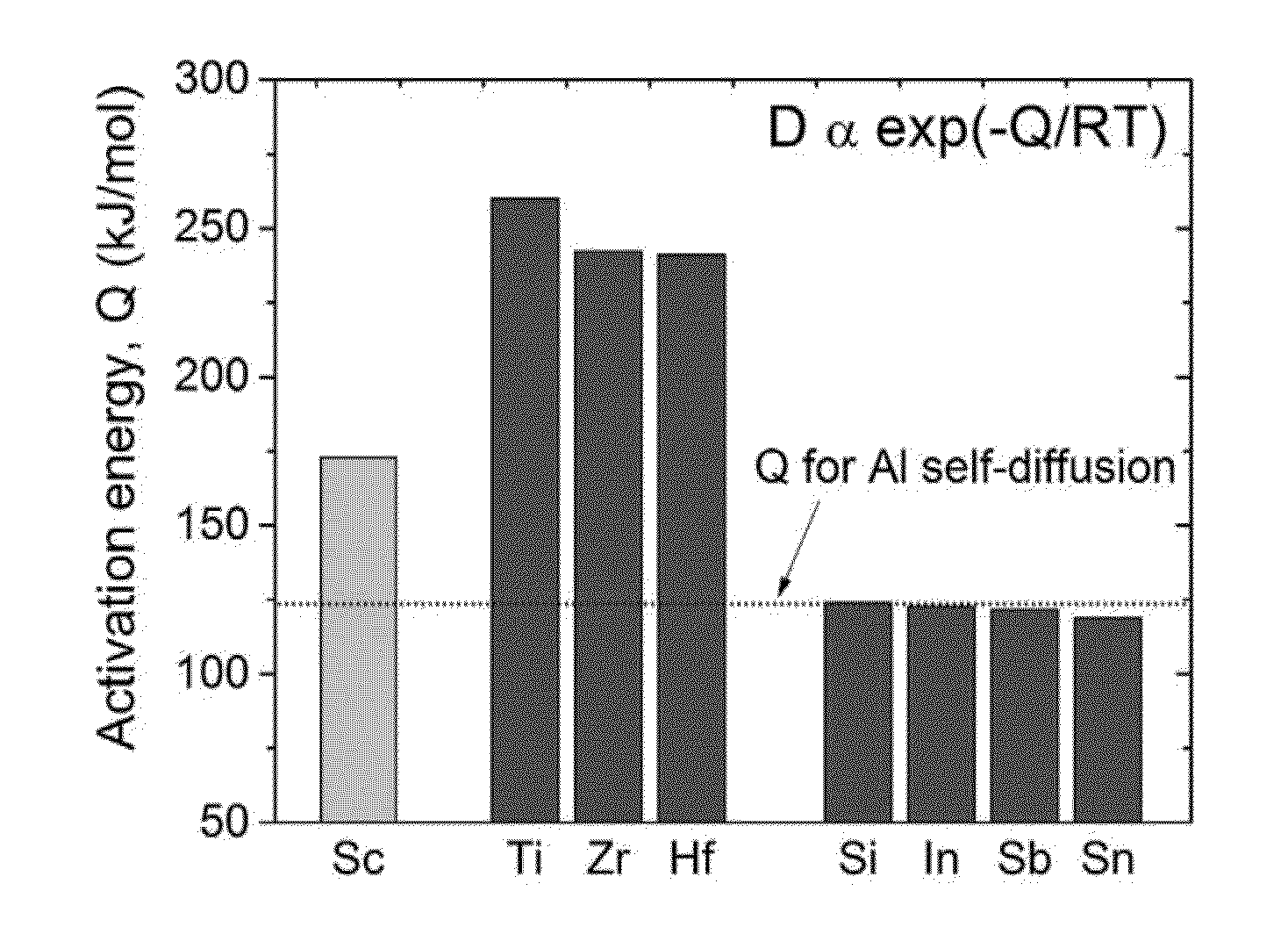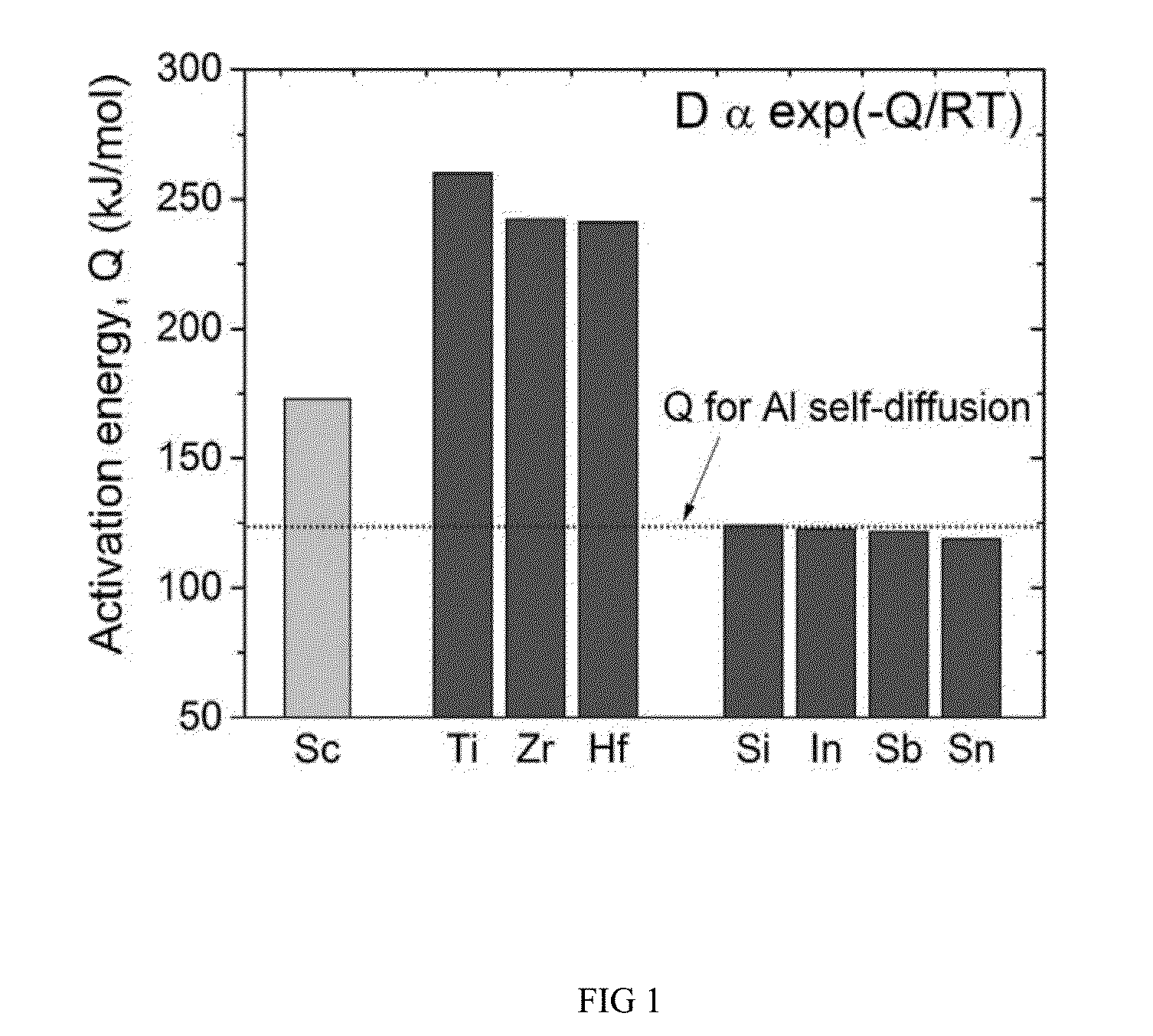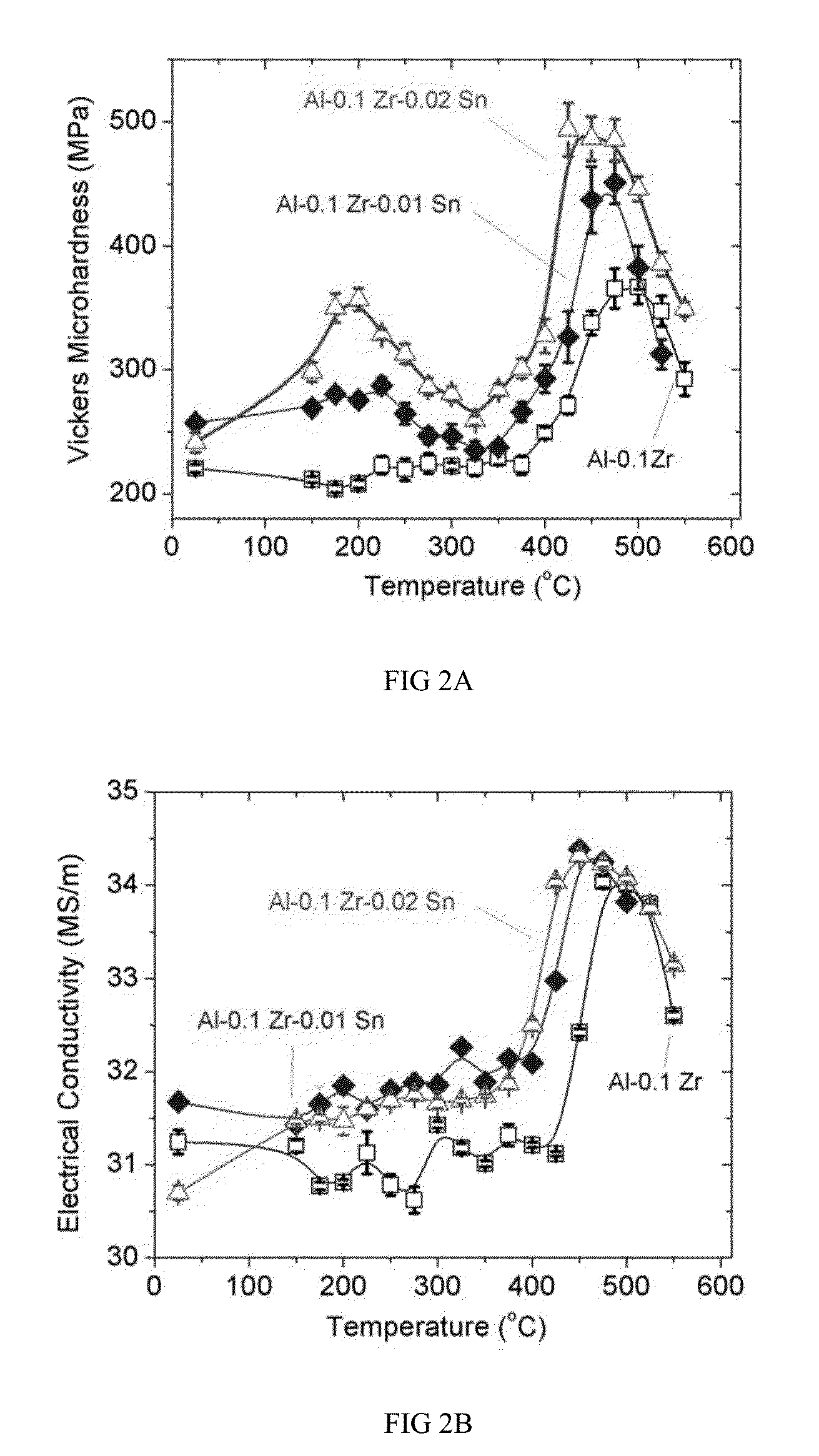Aluminum superalloys for use in high temperature applications
a technology of high temperature applications and aluminum alloys, applied in the field of aluminum alloys, can solve the problems of reducing engine efficiency, high cost, and inability to use current commercial light-weight age-hardenable aluminum alloys, and achieve the effect of increasing the diffusivity of zr in al
- Summary
- Abstract
- Description
- Claims
- Application Information
AI Technical Summary
Benefits of technology
Problems solved by technology
Method used
Image
Examples
examples
[0080]The following examples are set forth to aid in the understanding of the invention, and should not be construed to limit in any way the invention as defined in the claims that follow thereafter.
[0081]Alloys 1-4
[0082]Alloy Composition, Processing and Analytical Techniques
[0083]One binary control alloy and three ternary inoculated alloys were cast with a nominal composition, in atomic percent, at. %, of Al-0.1 Zr, Al-0.1 Zr-0.01 Sn, Al-0.1 Zr-0.02 Sn, Al-0.06 Zr-0.02 In. Master alloys, including 99.99 wt. % pure Al, Al-5.0 Zr wt. %, 99.99 wt. % pure Sn, and 99.99 wt. % pure In, were melted in alumina crucibles in air. The melt was held for 60 minutes at 800° C., stirred vigorously, and then cast into a graphite mold, which was optionally preheated to 200° C. The mold was placed on an ice-cooled copper platen during solidification to enhance directional solidification and decrease formation of shrinkage cavities. The alloy's chemical composition was measured by direct-current plas...
PUM
| Property | Measurement | Unit |
|---|---|---|
| diameter | aaaaa | aaaaa |
| diameter | aaaaa | aaaaa |
| diameter | aaaaa | aaaaa |
Abstract
Description
Claims
Application Information
 Login to View More
Login to View More - R&D
- Intellectual Property
- Life Sciences
- Materials
- Tech Scout
- Unparalleled Data Quality
- Higher Quality Content
- 60% Fewer Hallucinations
Browse by: Latest US Patents, China's latest patents, Technical Efficacy Thesaurus, Application Domain, Technology Topic, Popular Technical Reports.
© 2025 PatSnap. All rights reserved.Legal|Privacy policy|Modern Slavery Act Transparency Statement|Sitemap|About US| Contact US: help@patsnap.com



